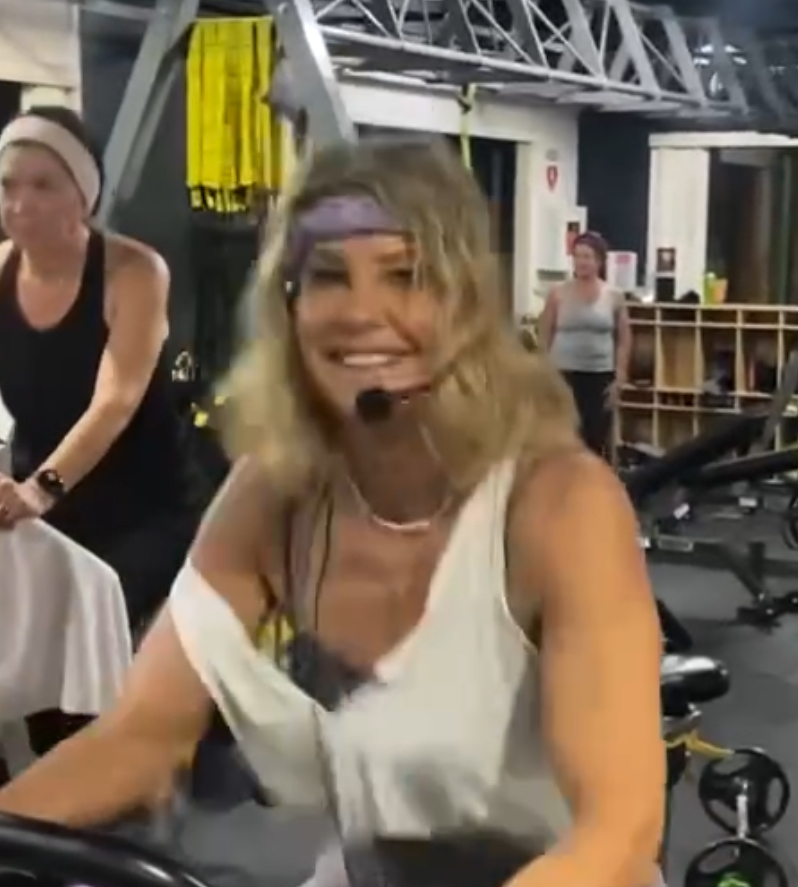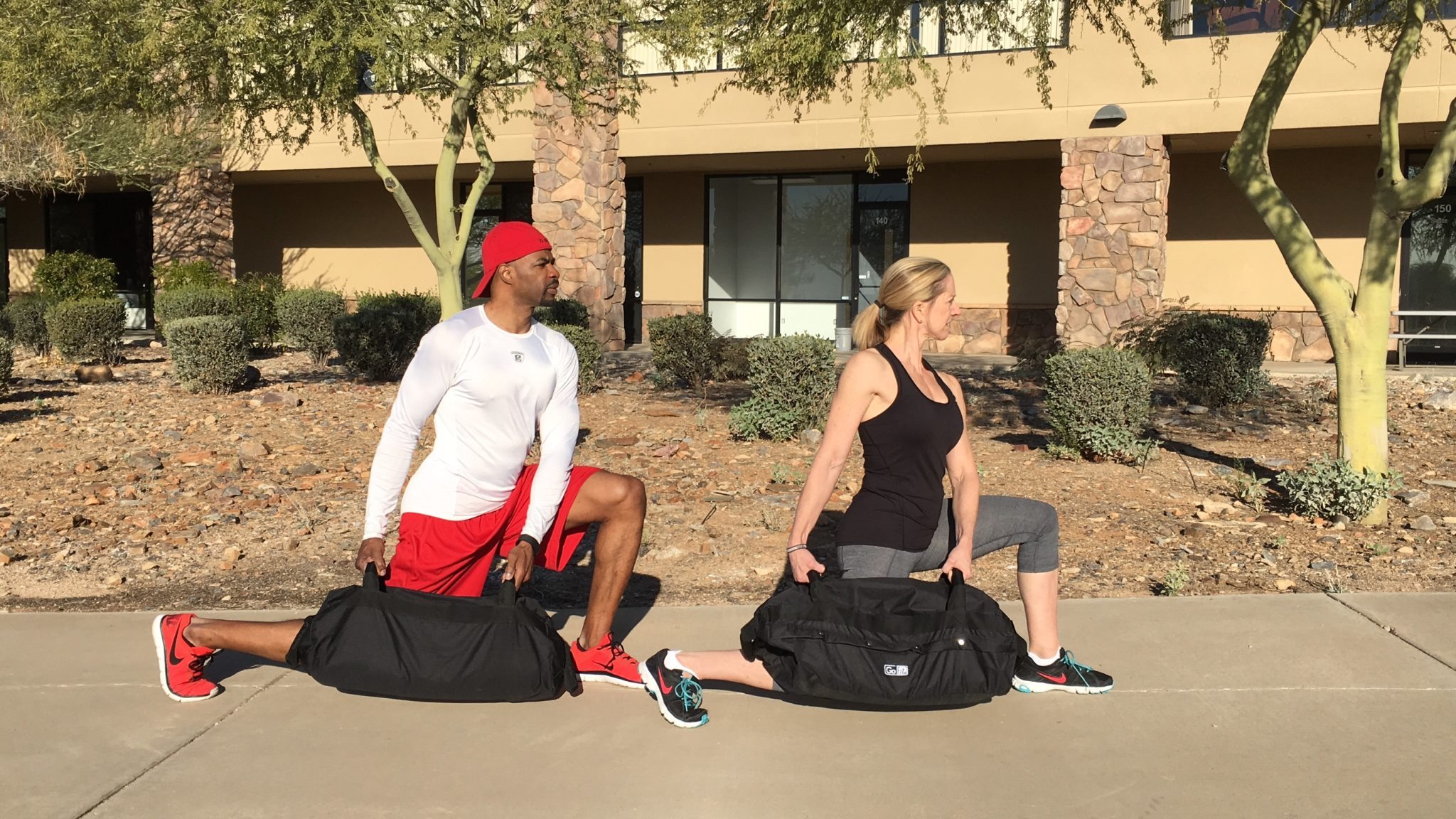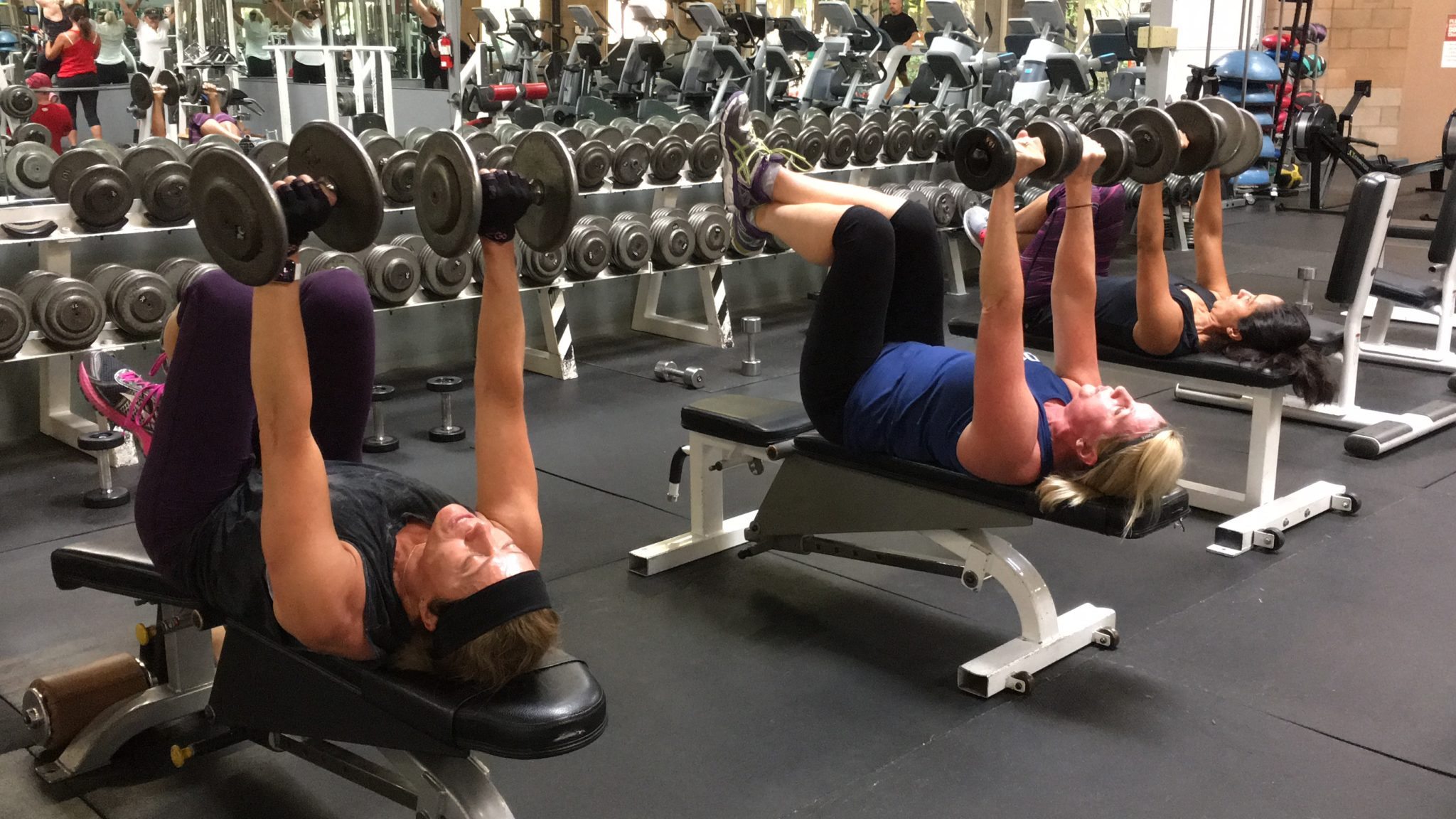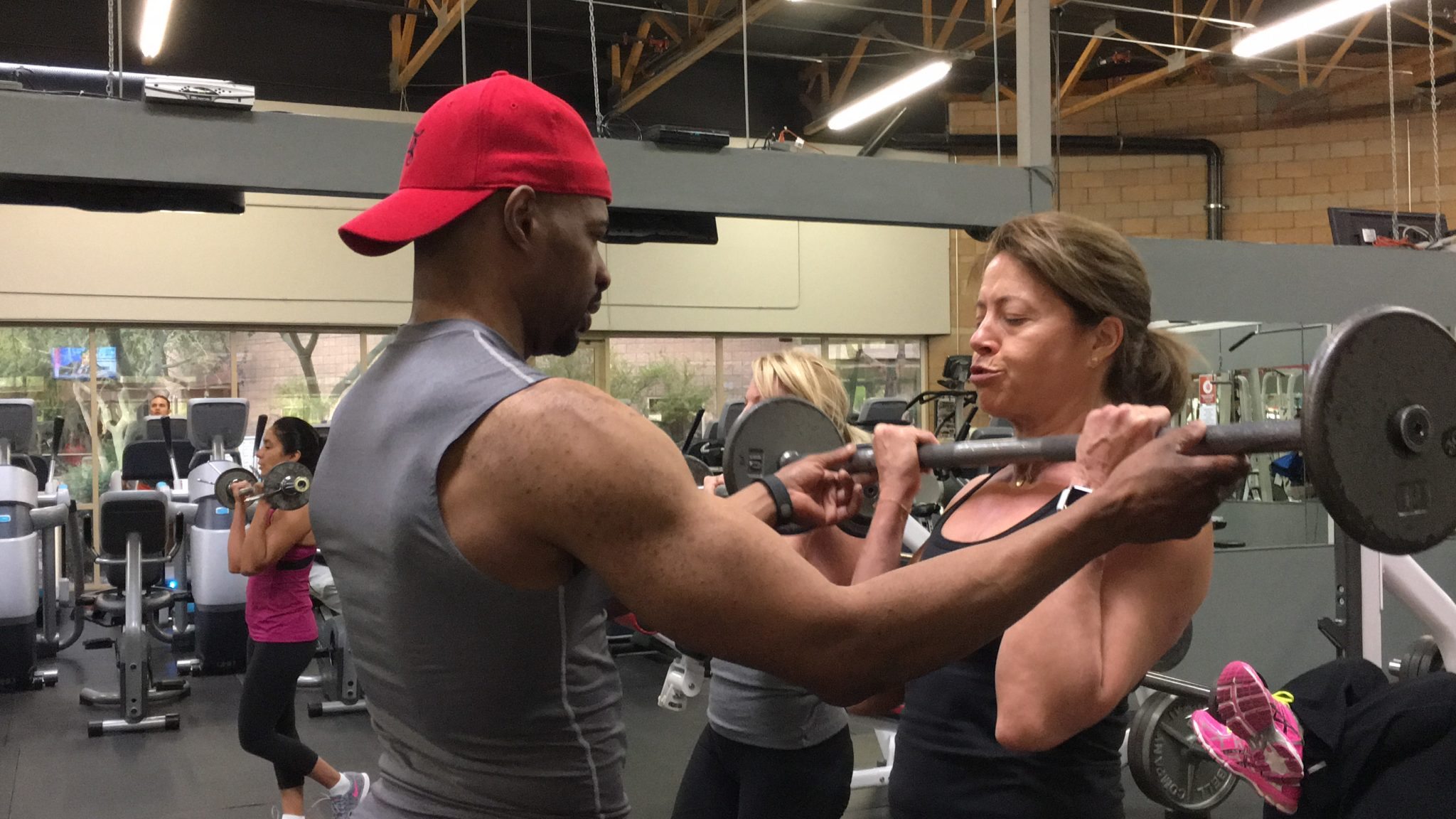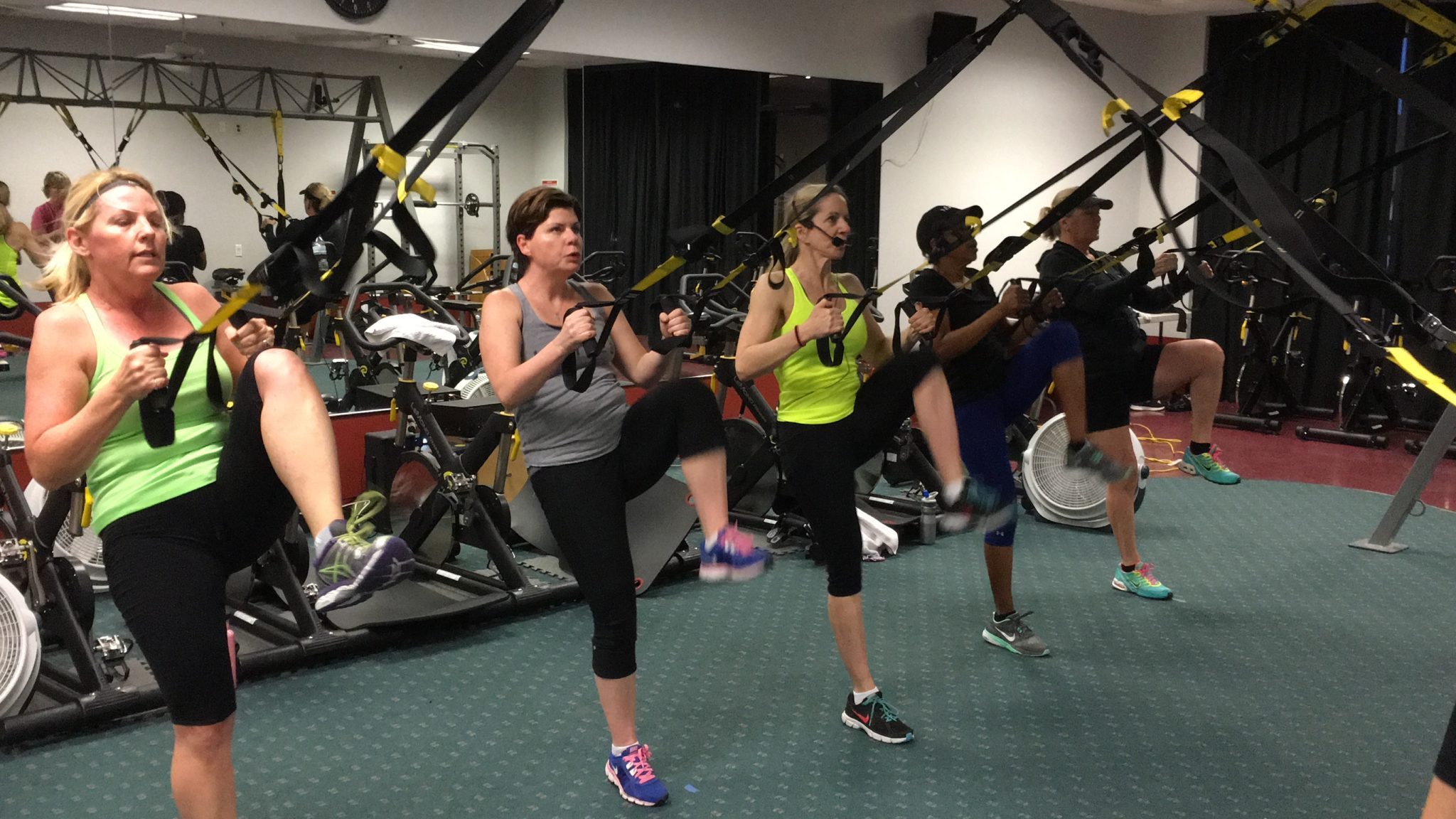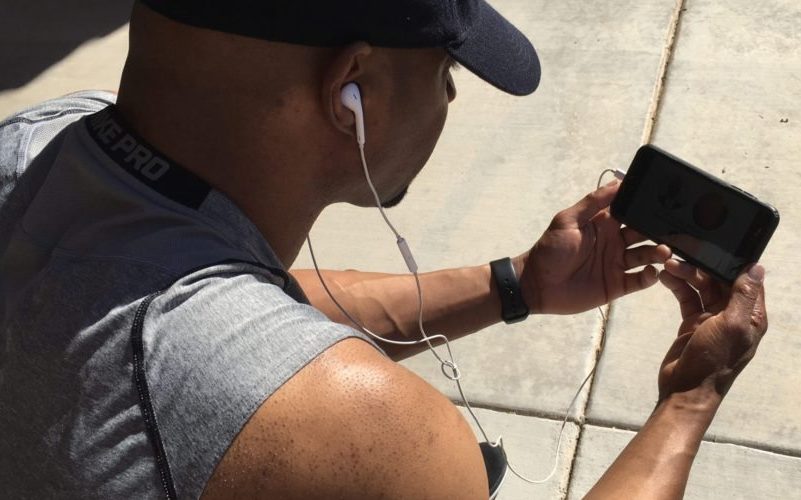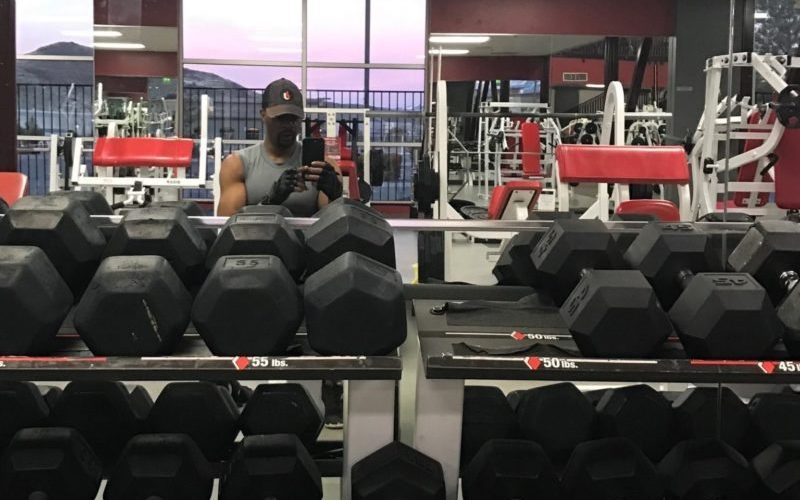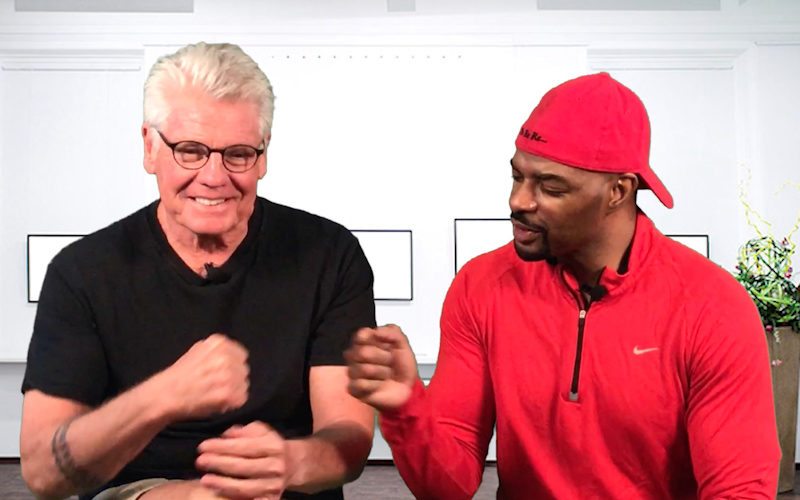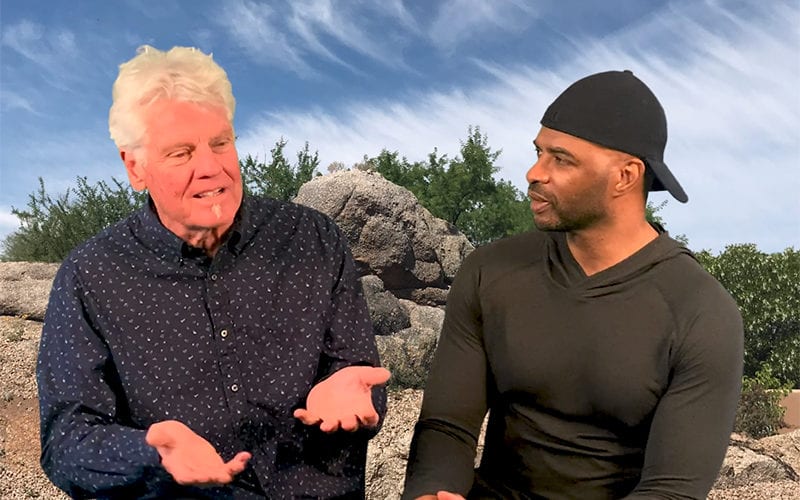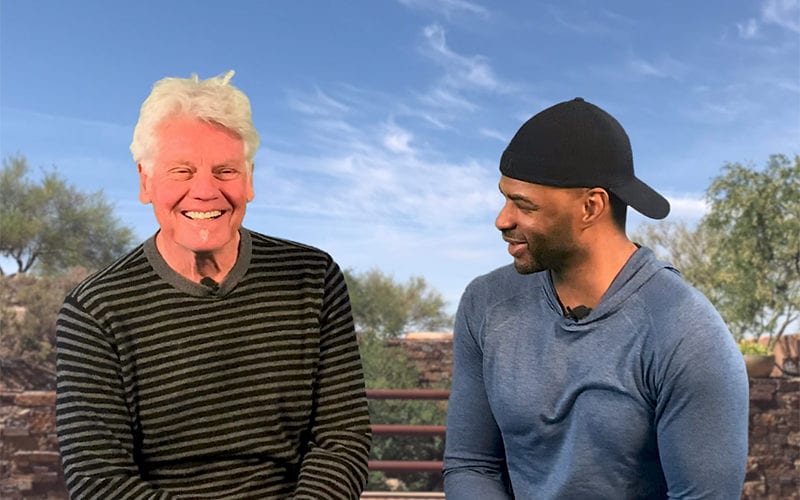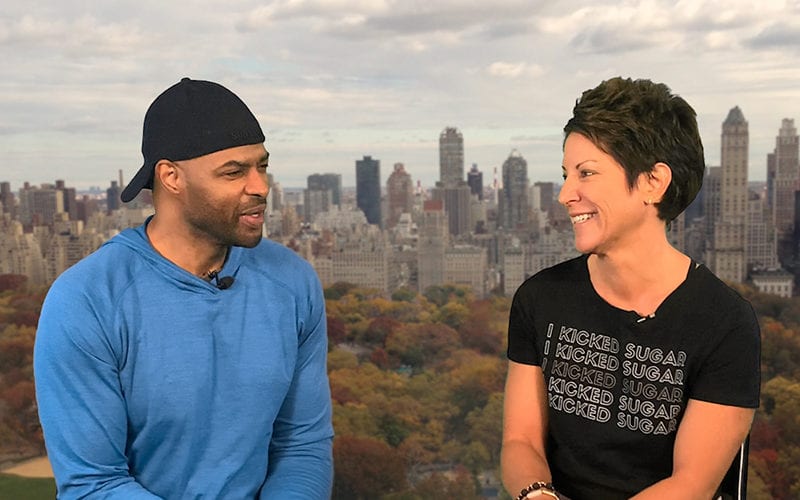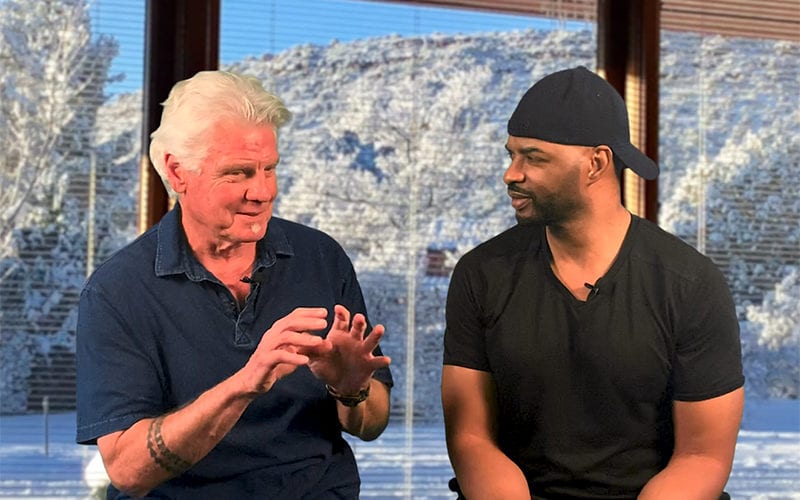Is this your Monkey Mind?
There is NO WAY I can workout this morning! I need more sleep. My body aches and needs to recover. I have a big presentation today and need the extra time to prepare. I didn’t get to bed until late, only slept a few hours and have a long day ahead. The list goes on, all trying to justify in my mind why I can’t workout this morning. For most people, this kind of chatter wins. And, to be honest, if not for my community it would have kept me in bed and out of the gym on many a day.
This is how the “monkey mind” works. Over the last year I have been working on a multitude of projects outside of my regular 8 to 5 job; marketing, newsletters, blogs, cooking videos, fitness certifications and giving limitless support to anyone within our community who wants it. I am also a student again always working on an assignment with a due date. Many nights I am working on my computer until late. When I finally get to bed, and the alarm goes off 4 to 5 hours later, the monkey mind begins right on cue. I think, “there is no way that I can do my normal workout. I should just go back to sleep. Yes, this would be good for my body.” Knowing that I have workout partners who are depending on me and knowing that they will miss me, my chatter eventually turns to, “Okay, I’ll just show up but I won’t workout.” As I’m driving to the gym my chatter turns to, “Well, I’ll start out and just see what I can do.” One hundred percent of the time I complete a full workout that meets with the standards that I expect from myself. And, this always surprises me, every time.
Here are five ways to shut down your monkey mind so you can stay true to your goals.
- Visualize. Picture yourself going through a strong workout and leaving the gym with a feeling accomplishment.
- Enjoy the present. Forget about the past and don’t try to predict the future. The future is the product of our present thinking and actions.
- Listen to that monkey. Is that really you or who you want be? Take control and quiet those thoughts that you know will not serve you well. I can remember saying to my friend, Keith, I don’t communicate well on the phone or I’m not a good reader. This was my monkey mind. Keith helped me to silence it by telling me that I will become what I say. Take a step outside of your mind and really listen to what you are saying. Only then can you recognize it and change it.
- Meditate. This is a hard one for me. How can one possibly quiet the mind when it so easily wanders from one thought to the next? I believe the secret is found in the power to concentrate and this takes practice. I will concentrate on my breath – slowly in and out. There should be no words, images or thoughts. This cleanses the mind and allows you to be more alert, focused and powerful. It takes practice.
- Commit. If I know I need to be at a workout, whether it is to support someone else or to stay committed to my own goals, I make it non-negotiable. In my mind it is not an option to miss. And, with the commitment, you can sometimes work it backwards. Since, I will be getting up at 3:15am to eat breakfast before a 4:15am workout, I better get to bed by 8:15pm so that I can get the 7 hours of sleep that I need for this workout.
Does any of this sound familiar? Do you have a monkey mind? Pick one way to shut it down from the above list and see how your mind quiets itself. You will have so much more mental alertness for things that really need it!
Amy
Load CommentsIt’s Not Time Management, It’s Choice Management
I am constantly looking for ways to be a better me than I was the day before. How can I be more loving when people may not be that way to me? How can I master parts of myself that undermine my purpose? And how can I more effectively reach all my health and life goals when time is limited? The answer comes down to the choices I make with the time I have. I heard someone say, being your best and achieving your goals is “not about time management. It’s about choice management.”
The concept of choice management hit me hard. Over the last year, I’ve implemented new practices like “deep work” and “time blocking” in my life. This is where you block out 20-90 minutes to work on a task without distraction. You allow nothing to sidetrack you. You stay focused and locked in on the project until the time is up. Choice management turns the idea of time management on its head and makes each person completely responsible for their life. Whether it’s a happy and purposeful one or one that is filled with disappointment and blame-shifting.
I have not been one to blame others for failures or disappointments in my life. My choices to be loving and compassionate are strong and absolute regardless of how anyone shows up for me. Where choice management will pay off for me is areas of my life that I’ve ignored or avoided. For far too long, I needed to be proactive in sharing and marketing our amazing community with the public. We have a decade of history of inspiring people to be happier and healthier. So why wouldn’t I let people know what we can do for their lives? My excuse was I am not a salesman and I don’t have time. I am learning that’s not true at all. It comes down to choice. My goal is to partner with people to be happy, healthy and their best. I commit to making choices that support this.
I encourage you to forget everything you were taught about time management. It comes down to managing your choices. If your goal is to lose weight or have a flat stomach, don’t use the excuse, “I don’t have time to cook or shop for health foods?” It has nothing to with time, but rather choices. Are your food choices supporting supporting a healthy body weight or flat stomach? If you want to be happy instead of depressed, are you choosing to surround yourself with people who are loving and thoughtful in how they see the world and other people? And if you have a dream, are you choosing to use your time doing things that move you closer to realizing it or are you being distracted by things that don’t matter? Sign up for our Stronger Coaching today for support with choice management. It’s could be the difference between living an ordinary life or an extraordinary one.
Stronger Mindset!
Keith
Load CommentsUnderstand the Nutritional Facts of your Food
My last blog introduced the importance of shifting from processed foods to whole foods. And while it would be ideal if all food consumption came from these sources, it’s more likely that some food items that you buy will have a food nutrition label. It’s very important to understand how and what to look for when reading the nutritional facts and list of ingredients.
First, never ever believe anything on the front of a package! “Fat-free” and “all natural” are advertising phrases to make you think something is “healthy”. Turn the package around! Go directly to the food label and ingredient list. “Fat-free” may sound like a dieters dream, but these items are usually loaded with sugar. If they take the fat out, which gives most foods their flavor; they have to add something back. “All natural” doesn’t mean anything. The Food and Drug Administration doesn’t define it, so makers won’t get in trouble as long as the food doesn’t contain added colors, artificial flavors, or “synthetic substances.” That means there’s room for interpretation, and food labeled as “natural” may contain preservatives or be injected with sodium.
You, as the consumer need to be aware! Learn how to read a food label. The following are 5 things that you should look for:
- Serving Size: Before looking at calories or anything else, know how many “serving sizes” are in the container. For example, if there are 3 servings in a bottle of ice tea and you drink the whole bottle, you have just consumed triple the amount of calories and triple the % Daily Value of the nutrients listed on the label. Generally speaking, packaged meals should contain no more than 400 calories; snacks shouldn’t exceed 150.
- Know your fats: Fats should be in the range of 20% to 35% of the calories you eat. Do the math! Look for foods low in saturated and trans fats, and cholesterol, to help reduce the risk of heart disease. Most of the fats you eat should be polyunsaturated and monounsaturated fats, such as those in fish, nuts, and vegetable oils.
- Eat less sugar: The statistics are shocking on how sugar is added to foods in many different forms. Names for added sugars include sucrose, glucose, high fructose corn syrup, dextrose and fructose (anything that ends in “ose”). Don’t be fooled by mannitol or anything that ends in “ol”. Those are sugar alcohol that are quickly converted to sugar. Yogurt is a good example of what some would consider to be a “health” food, but in many cases sugar has been added. Choose a brand that has less than 10 grams of sugar.
- Fill up on Fiber: Foods that contain 3 g or more can help reduce appetite and cholesterol.
- Reduce sodium (salt); increase potassium: Most sodium you eat is likely to come from processed foods, not from the salt shaker. Research shows that eating less than 2,300 milligrams of sodium (about 1 tsp of salt) per day may reduce the risk of high blood pressure. Older adults should aim to eat no more than 1,500 milligrams of sodium each day. To meet the daily potassium recommendation of at least 4,700 milligrams, consume fruits and vegetables, and other sources of potassium; such as, sweet potatoes, beet greens, white beans, plain yogurt and bananas. These counteract some of sodium’s effects on blood pressure.
If you are just learning to read food labels it may seem a little daunting, but relax, you will become an expert in no time. You will be proud of yourself for knowing exactly what you are putting in your body.
In summary, keep saturated and trans fats, cholesterol, and sodium low. Get enough of potassium and fiber, vitamins A, C, and D, calcium and iron, and check the calories (400 or more calories per serving of a single food item is high). Use the % Daily Value (% DV) column: 5% DV or less is low, and 20% DV or more is high.
It takes some practice, but you will be able to identify the nutritional heroes and the imposters and take charge of your health. Start today by inspecting your pantry and refrigerator for 3 of your favorite “go to” food items. Look at the labels now that you know what you know. Will they pass the test?
Stayed tuned for my upcoming article on the recent developments with the FDA standard on labeling.
Amy
Load Comments
Build Your Courage Muscle
Courage is absolutely essential to living an extraordinary life. At 2BeRe-U, we define such a life as daily striving to be your personal best and loving and helping others be their best. The one thing that can interfere with this happening is fear. And fear shows up almost everywhere. You must be strong to take it on. And if you’re to win the battle against fear, you must exercise your courage muscle.
The best definition I’ve heard for courage is “being powerful in the face of fear”. There are some things that I have no problem taking on like my health, fitness and helping others. I bring my best effort to all of these. Regardless of what people think about how I eat, approach exercise or support friends, I do it lovingly and at 100%. But when it comes to other areas, I’ve had to use everything in me and draw motivation from outside sources to take action. This doesn’t make me weak. It simply reveals an area of my life that I need become stronger in. This is where building the courage muscle comes in.
Have you noticed a declining level of fitness or health and ignored the signs like shortness of breath, increased fatigue or gradual weight gain? How has fear stopped you from addressing this area of your life? Why not go see your doctor for an assessment of where you are so you can develop a plan for getting your health and life back?
I allowed fear of the unknown to keep me from responding to an IRS notice for way too long. As with most things that go unaddressed, they get worse with time. I finally got tired of ignoring the issue so I called someone I trusted for advice. They shared how they would handle the situation; which was to contact the IRS immediately and learn all the facts about the matter. I knew this was the correct course of action, but it didn’t silence the fear. Only courage could do that. As I dialed the number to the IRS officer, my resolve and courage muscle became stronger. I was given a list of things to do by certain dates. Each item marked a new opportunity to build courage. So I went to work strengthening this muscle. The matter has been satisfactorily resolved. And while that’s wonderful, the biggest gift is greater courage.
I encourage you to work on building your courage. Truly take on your health and fitness or any other area of your life where you feel a loss of power. Don’t let fear tell you it’s too hard or too late to take action. Be a loyal and unconditionally loving friend when people in your life go through tough times. Don’t let fear of what others think or say stop you. Take on that financial or legal matter you’ve been ignoring. Don’t let fear fool you into thinking it doesn’t exist. Free yourself of worrying about when you’ll eventually have to deal with it. Build courage so you can take on everything you fear. And when you do, you will make living an extraordinary life possible.
Stronger Mindset,
Keith
Load CommentsShifting from Processed to Whole Foods
Everywhere you look you will see processed foods from grocery store shelves to restaurants. You will hear startling statistics like 70% of the American diet is made up of processed foods or more than half the calories Americans eat are from “ultra-processed foods”. As we get busier and busier we have less time to cook and “convenience” foods become a tempting option. What exactly is a processed food? Well, some obvious examples are potato chips, cookies, crackers, granola bars, frozen pizza, candy and fast food. The not so obvious would be most anything that comes in a box or a jar and has a label. Processed foods can be high in added sugars, saturated fats, additives and chemicals!
Whole foods are most often found around the perimeter of a grocery store and include vegetables, fruits, whole grains, nuts, legumes and some “grass-fed” or “pasture raised” dairy items. They are foods that are as close to their natural form as possible, and they are full of nutrients.
Making the shift from processed foods to whole foods isn’t easy, but, like anything, if you are committed you can make it happen. Make it a habit, and wholesome eating can become a part of your everyday unconscious routine. Your health is worth the effort. The following are 7 tips to get started.
- Commit to change – Understand that consuming processed foods in excess over time is not good for your health.
- Research and educate – Read articles about food and health. Watch a food documentary. My favorites are Food, Inc., Forks Over Knives and Fed Up.
- Make a plan for shopping – Stock up on organic frozen fruits and vegetables and buy in-season fresh produce to make salads and cook within the next few days.
- Read labels – Be aware of added sugar and fat. Less ingredients are always better.
- Cook meals at home – Anyone can do it! Start easy with salads filled with your favorite veggies and canned wild pink salmon. Or, a simple chicken breast baked with your favorite spices.
- Use healthier condiments – This is an easy one! Look for the spicy salsas without added sugar – my favorite is 505 Southwestern Chunky Salsa. Cholula Hot sauce or Sriracha will add a kick to most anything. And, two more of my favorites, mustard (without added sugar) and hummus.
- Keep at it! There will be times when staying away from the processed foods is difficult and you may slip up. What’s important is that you get back on track and hold strong with the tips above.
I will be the first to admit that I eat some processed foods, but only what I would determine to be healthy for me. That said, the ultimate goal is to always be striving towards more whole foods and less processed. Some days will be better than others, but, as you educate yourself, you will be on an upward slope towards establishing a clean way of eating for life. You will have more energy and you’ll be in a happy mood because you are in control. What is one highly processed food that you can give up today?
Amy
Load CommentsForgiveness Is Love’s Sweet Fragrance
One of the most beneficial virtues is forgiveness. It is a gift to anyone who practices it. The person who does the forgiving benefits immeasurably.
All the major faiths and religions teach us to forgive regardless of the act committed. Humankind often finds this hard to do. I certainly use to. As I have aged and matured, I find life is so much easier when I am not weighed down by passing blame and judging. And when I forgive and accept the apologies that I haven’t received, I feel light and free. There is an emotional and mental clearing that takes place within. And love fills the new space and expands throughout my life.
I have made many mistakes during my life. And I have apologized for them. I hope people have forgiven me. If they haven’t, I lovingly accept their choice. And for those who feel they have wronged me, they haven’t. I have only love in my heart for them. And I hope they find their way to forgiveness so they can be unburdened by the distractions of unhealthy emotions like judgment, guilt and blame. Those low energies only lead to an ordinary life.
If you are feeling guilty about something you’ve done or carrying blame about something someone has done, I encourage you to forgive yourself and them. It is not as hard as we’ve been led to believe. It’s effortless when you’re committed to being your best self and the most loving human being you can be. Mark Twain said it best. “Forgiveness is the fragrance the violet sheds on the heel that has crushed it.”
Live your life with a loving and forgiving heart.
Stronger Mindset,
Keith
Load CommentsMy Mom Is Awesome
My mom made sure physical activity was a part of my childhood – from swimming, dance and gymnastics to camping trips that involved enjoying the outdoors through hiking, fishing or even riding motorcycles. Like most parents, she sat through many years of gymnastic meets. That alone would be enough to acknowledge her for. But that would leave out the fitness role model she became for me in my adult years. It is this example that continues to inspire me to make health and fitness a lifelong commitment.
My mom was a first grade teacher for many years. In and out of the classroom, she commanded a lot of respect. But she also had tremendous patience. This combination was perfect when it came to teaching me and other kids about fitness and life. My mom taught me how to swim when I was very young along with hundreds of other children. At that age, you want to have confidence in your instructor. I certainly had that in her. There was literally no challenge that she couldn’t seem to handle. I recall one of her favorite sayings, “Are you being a good problem solver right now?”
Growing up, my mom concentrated on family. Once my siblings and I were off to college and she went through a divorce, she began to focus on herself. She proved it’s never too late to get fit and develop a love for exercise. She started playing tennis consistently around the age of 48. She was asked to join Who’s Who of Arizona and joined their tennis. They never would have extended the invitation if they knew it was a summer when she didn’t have a job. My mom ended up running that tennis league. They called her “Ed” because she usually played the male spot as they were always short of men. Because she didn’t have a work phone number others thought she was independently wealthy. She got her current husband, Larry, to come play when she showed up at his class in her tennis clothes, and that was the beginning of their courting. I think this is where her personal love for the sport and fitness was born. I still have pictures of her teaching my boys how to play.
There was never a time in my life where I could go long periods without exercising. Whenever I took the smallest break, she would ask me, “Are you exercising?” It was her way of reminding me how important this was for me physically, mentally and emotionally. To be honest, sometimes I said yes, even when I wasn’t. But her words were still there and would sooner or later motivate me to get back into a fitness routine.
My mom is now 79 years old and still playing tennis every week. She is an incredible role model for fitness and life. I owe a great deal of my commitment to healthy living to her. And when I am confronted with a life issue, her words about being a good problem solver make me pause, reflect and shift from frustration and despair to positive action. My mom is awesome. And like her, I want to inspire people my age to develop a love for healthy eating and exercise. With desire, commitment and community, anyone, at any age can be fit, healthy and happy.
Love,
Amy
Load CommentsMy Mom Inspired Me First
I was fortunate to be raised by a mother who taught me a strong work ethic and to change something if I didn’t like how it was going. I remember having to go to Mississippi during summer break to farm family land. I hated getting up early on the weekends to do this while my friends slept in. Now I am grateful that my parents created this opportunity for my younger brother and me. I am a hard worker and have appreciation for other people who give their best no matter what the task is.
We were latch key kids and often stayed home alone for a few hours until my parents got in from work. That time was spent doing homework and chores. All the assigned house work had to meet my mom’s expectations. If washing dishes was my job and she saw one glass that wasn’t cleaned, that meant all the dishes should be washed again. Her motto was “choose to do it right the first time or choose to do it again. You choose.” She never raised her voice, repeated herself or hit us. She simply gave us clear choices.
We didn’t get to complain either. If we said, “I’m bored.” She’d reply, “Then do something about it.” And if we expressed an opinion about something we didn’t like, she would say, “Are you just going to talk about it or do something about it?” With a mom like this, I learned to be in action early.
My mom is a force. She ranks ahead of my heroes Mahatma Ghandi, Martin Luther King Jr and Eleanor Roosevelt. She was the first person who taught me what Ghandi’s words “be the change you wish to see the world” really meant. She was my early inspiration for ToBeRe… and 2BeRe University. Everything I do that supports another person is because of her.
When I have experienced challenging times, she’s been there for me. I have always been able to share things with her that are deeply personal. Never one to enable or allow me to be a victim, she tells me what is necessary to forgive myself and others, learn from what happened and apply it to be better.
My mom and I are each other’s biggest supporters. All our talks are straight conversations. We have each other’s permission to thoughtfully tell the other person if their words or actions aren’t loving. We help each other be our personal best.
It is my hope that I continue to honor my mom by how I live life and contribute to the world. I know it’s not Mother’s Day yet, but it is on my heart to pay tribute to my hero Dora. I love you.
Keith
Load CommentsYou Become Your Conversations
Most people believe a good attitude will take you farther than a bad one. And it’s better to be positive than negative. But believing and knowing it aren’t the same as practicing it. The practice of these mental tools takes place within our thoughts and conversations. Visionaries and peak performers understand this so they take great care in what they think and say to themselves and aloud.
Inspirational life coach and author Robin Sharma says, “You become your conversations.” Look at the most successful and happy people in the world and in your life. Now close your eyes and picture them talking. Is their conversation filled with doubt or negativity? No, it’s not. Their words are filled with confidence. Now, they may mention their fears and challenges, but it’s in the context of how they will face them. Their conversation is a powerful one. When peak performers approach big games regardless of the odds, they express confidence and a commitment to give it everything they’ve got.
Now compare that to the conversation from someone who is filled with doubt. Instead of saying, I know I will lose weight and be in the best shape of my life, they say, “I’ve always been heavy. It’s too hard to eat right and really push myself in my workouts.” If someone has gotten hurt doing something challenging, their first words are likely, “I knew this was going to happen. This always happens to me. That’s why I hate doing that.” These conversations aren’t bad. They just aren’t powerful. And instead of keeping you safe, they become your limits.
When I broke my shoulder snowboarding, I had fear about getting back on the slopes. But my conversation was never, “If I board again, I will eventually get hurt again.” I refuse to allow my fears to become limitations. I reevaluated what I might’ve done to contribute to my accident. In my case, my skills were not good enough so I invested in lessons for three seasons. Now I am better on the board and safer.
Your conversations matter. Choose what you think and say wisely. They will become self-fulfilling prophesies. So make them positive and bursting with humble confidence.
Be Stronger,
Keith
Load Comments


